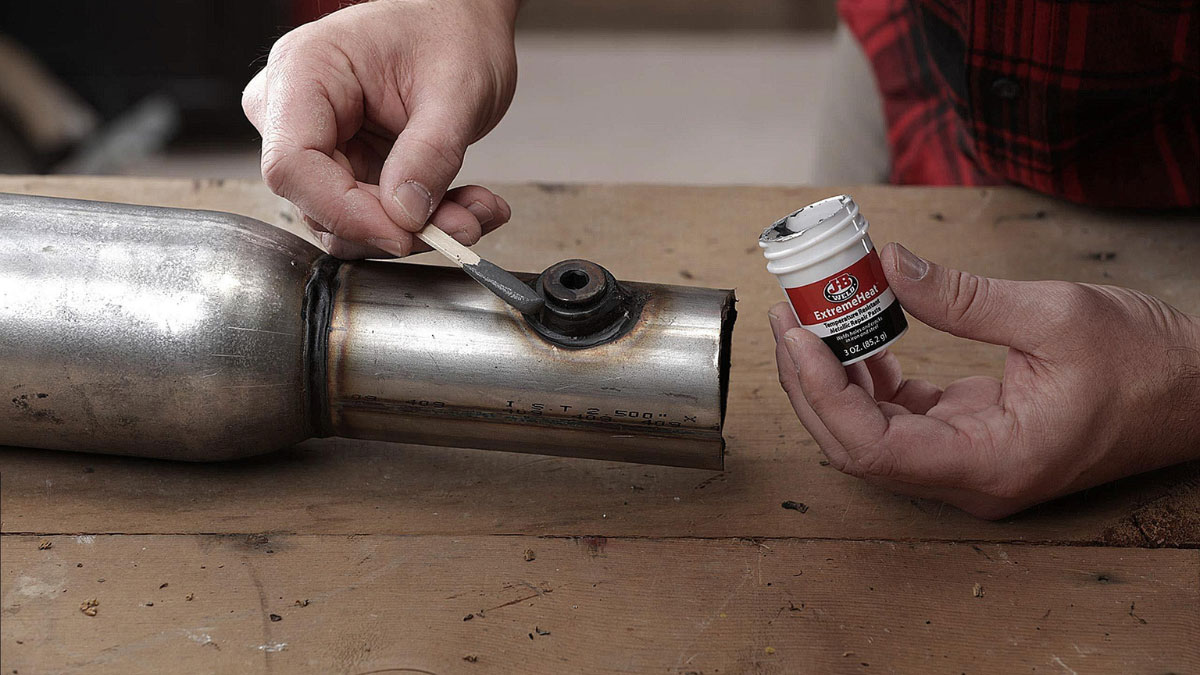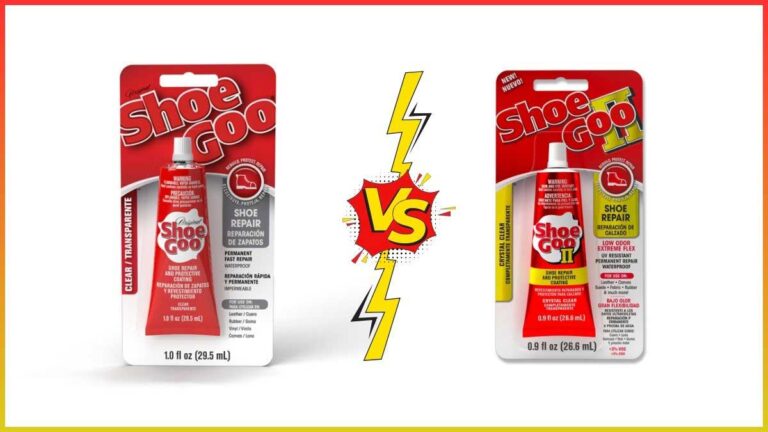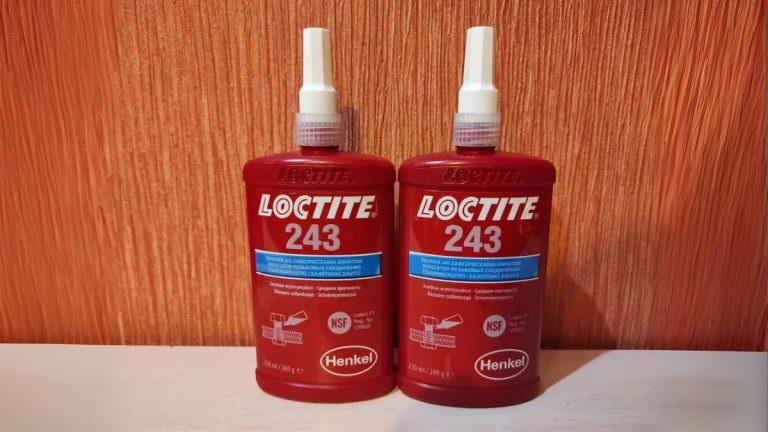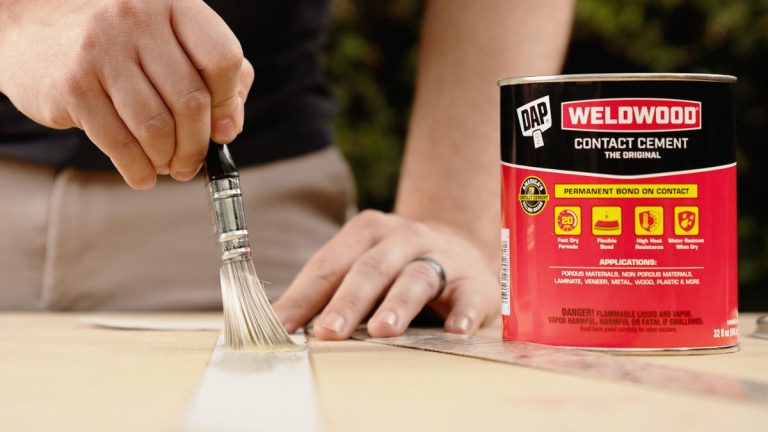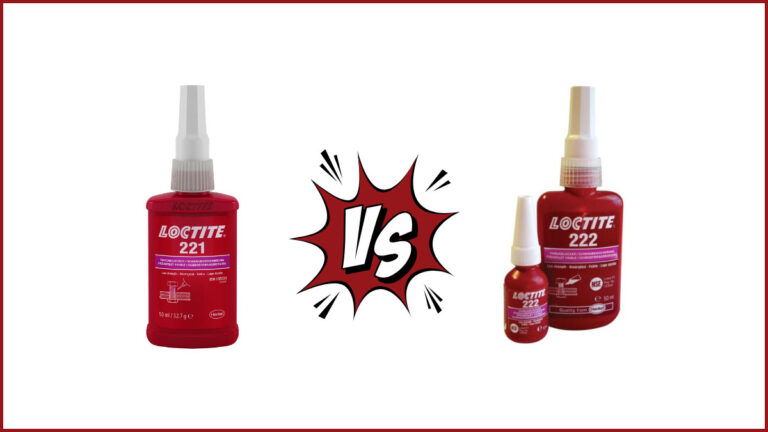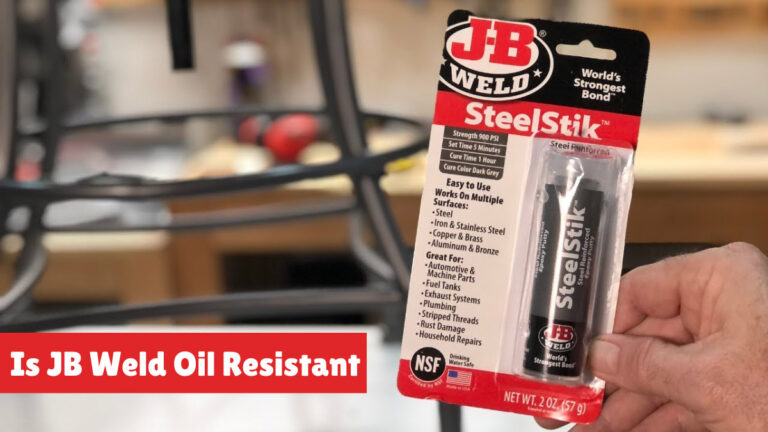How Long Does It Take for JB Weld to Dry: Complete Cure Guide
Ever found yourself in the middle of a DIY project and wondered, “How long does it take for JB Weld to dry?” You’re not alone. Whether you’re fixing a broken tool or sealing a crack in your car’s engine, knowing the drying time can make all the difference in achieving a strong, lasting bond.
JB Weld is a popular choice for its durability and versatility, but the drying time can vary based on several factors. In this text, you’ll discover the key elements that influence how quickly JB Weld sets and cures, helping you plan your projects more effectively. Let’s jump into the details so you can get back to building with confidence.
Key Takeaways
- Temperature Influence: Higher temperatures accelerate JB Weld curing; optimal conditions at 110°F can reduce cure time to around 8 hours.
- Humidity Impact: Lower humidity levels expedite the curing process; high humidity can significantly slow it down.
- Mix Ratio Importance: Properly mixing equal parts of resin and hardener ensures faster and more complete curing.
- Surface Preparation: Cleaning and drying surfaces before applying JB Weld enhances adhesion and reduces curing time.
- Product Variations: Standard JB Weld typically takes 15 hours to fully cure, while JB Weld KwikWeld sets in 6 minutes for quicker fixes.
JB Weld Curing Process
Understanding the JB Weld curing process is crucial for achieving the best results in your repair projects. Knowing the factors that affect cure time can help you plan and execute your tasks efficiently.
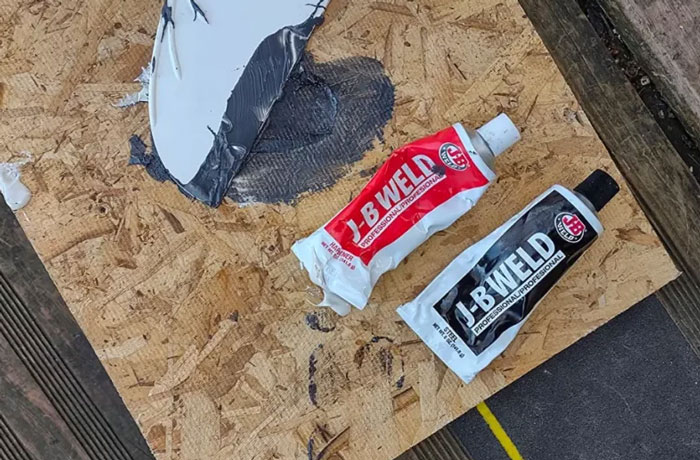
Factors Affecting Cure Time
Several factors influence JB Weld’s cure time. Each variable can accelerate or decelerate the process, affecting the final outcome.
Temperature:
- Higher temperatures speed up the curing process. For example, if temperatures are above 50°F (10°C), JB Weld cures faster.
- Using a heat lamp or light bulb near the weld after it has cured for six hours can reduce the drying time.
- At 110°F (43.3°C), the typical cure time reduces to around 8 hours.
Humidity:
- Lower humidity levels can expedite the curing process, while higher humidity can slow it down.
Mix Ratio:
- Improperly mixed compounds may result in longer cure times or incomplete curing. Follow the instructions precisely to ensure optimal performance.
Surface Preparation:
- Clean, dry surfaces provide better adhesion and faster curing. Dirt, grease, or moisture can extend the curing time.
Typical Cure Time
The typical cure time varies between different versions of JB Weld.
Standard JB Weld:
- Takes 4-6 hours to handle. It’s recommended to dry overnight (approximately 15 hours) before using.
JB Weld KwikWeld:
- Sets in around 6 minutes.
- Can be used shortly after, making it ideal for quick fixes.
Temperature and Humidity Impact
Temperature and humidity are pivotal in determining the JB Weld curing time. Elevated temperatures and lower humidity levels expedite the curing process.
- Higher Temperatures: Above 50°F (10°C) accelerate curing.
- Ideal Temperature: Exposure to temperatures around 110°F (43.3°C) can reduce cure time to about 8 hours.
- Low Humidity: Promotes faster curing, facilitating quicker project completion.
| Temperature Range | Impact on Cure Time | Example Use Case |
|---|---|---|
| Above 50°F (10°C) | Speeds up curing process | Outdoor repairs in mild climates |
| 110°F (43.3°C) | Reduces typical cure time to around 8 hours | Repairs needing rapid turnaround |
| Low Humidity | Promotes faster curing | Indoor projects with controlled climate |
Carefully manage these environmental factors to achieve optimal results in your DIY projects. By understanding and controlling the JB Weld curing process, you ensure sturdy, lasting repairs.
How to Use JB Weld
Using JB Weld properly enhances its effectiveness and ensures sturdy repairs. This guide helps you navigate the process efficiently.
Preparation
Preparing the surface is vital for optimal adhesion.
- Clean Surface: Ensure the surfaces are free from grease, dirt, and oil. Using sandpaper can help roughen smooth surfaces, enhancing the epoxy’s grip.
- Dry Surface: Confirm that the area is dry before application. Moisture can hinder adhesion and prolong drying time.
Mixing
Mixing JB Weld correctly is crucial for achieving a strong bond.
- Equal Amounts: Use equal parts of the resin and hardener. Most JB Weld tubes come with a 1:1 ratio.
- Thorough Mixing: Blend the components on a disposable surface until the mixture turns a consistent gray color. This usually takes about 1 minute.
- Consistency: Ensure the solution is uniform and free from air bubbles. Inconsistent mixing can lead to poor bonding.
Application
Applying JB Weld accurately ensures a durable fix.
- Applying the Mixture: Using a tool like a putty knife or wooden stick, spread the mixture evenly over the surface.
- Press the Surfaces Together: Press the pieces firmly together if fixing a breakage, ensuring the mixture fills any gaps.
- Clamping (Optional): Use clamps to hold parts together while the epoxy cures. This can improve alignment and bond strength.
JB Weld Drying Time Factors
Several factors influence JB Weld’s drying time. Understanding these will enable you to manage your project timeline effectively.
| Factors | Impact on Drying Time | *
|———|———————–|
| Temperature| Higher temperatures speed up curing. Ideal conditions at 110°F can reduce drying time to ~8 hours.
| Humidity| Lower humidity levels promote faster curing.
| Surface preparation| Clean, dry surfaces ensure optimal curing and bond strength.
By adhering to these steps, you can maximize the performance and durability of your JB Weld repairs.
Tips to Speed Up JB Weld Cure Time
To ensure your JB Weld cures faster, it’s vital to consider several factors that can significantly reduce the drying and cure times. Use environmental adjustments and accelerators for optimal results.
Environmental Adjustments
Temperature
Temperature plays a crucial role in JB Weld’s curing process:
- Room Temperature Above 50°F (10°C): Curing is faster in warmer environments compared to cooler ones.
- Heat Application: Placing a heat lamp or light bulb near the JB Weld, after it has set for six hours, can expedite the drying process.
- High Temperatures: Baking the JB Weld at around 110°F (43°C) can shorten the full cure time to approximately 8 hours.
Use of Accelerators
Heat
Heat application is an effective accelerator:
- Initial Set: Allow JB Weld to set for the recommended initial period.
- Post-Set Heating: Apply heat through a lamp or light bulb to hasten the curing. Ensure it stays within safe temperature limits to avoid compromising the bond strength.
Adjusting your approach with these tips can lead to quicker and efficient use of JB Weld, ensuring strong and reliable results.
Common Issues and Solutions
Understanding the common issues that can arise during the JB Weld curing process is crucial for successful application. Below are some typical problems and effective solutions to ensure optimal results.
Troubleshooting Slow Cure
If JB Weld isn’t curing as quickly as expected, consider the following factors and solutions:
Temperature:
- Low Temperature: Curing at temperatures below 50°F can significantly slow down the process.
- Solution: For faster curing, use a heat lamp or position the weld in a warmer environment.
Humidity:
- High Humidity: Excess moisture in the air can impede the hardening process.
- Solution: Ensure the curing area has good ventilation or use a dehumidifier to reduce moisture levels.
Mix Ratio:
- Improper Mixing: Incorrect proportions of resin and hardener can lead to incomplete curing.
- Solution: Always mix equal parts of the JB Weld resin and hardener thoroughly.
Here’s a table summarizing these factors and solutions:
| Issue | Cause | Solution |
|---|---|---|
| Slow curing | Low temperature | Use a heat lamp or warmer environment |
| Slow curing | High humidity | Improve ventilation or use a dehumidifier |
| Incomplete curing | Improper mix ratio | Ensure equal parts resin and hardener |
Ensuring Proper Bonding
For strong, long-lasting results with JB Weld, proper bonding is essential. Here are steps to achieve a robust bond:
Surface Preparation:
- Clean Surface: Dust, oil, and rust can weaken the bond.
- Action: Clean the surfaces thoroughly using a degreaser or solvent.
Mixing:
- Thorough Mixing: Inadequate mixing can result in weak spots.
- Action: Mix equal parts of resin and hardener until the color is uniform.
- Even Application: Uneven application can create air pockets.
- Action: Spread the mixture evenly over the surface using a tool.
Here’s a checklist to ensure proper bonding:
- Clean surfaces with a degreaser or solvent.
- Mix equal parts resin and hardener thoroughly.
- Apply the mixture evenly without air pockets.
- Align and press surfaces together for optimal adhesion.
Following these guidelines and addressing common slow-cure issues will help you achieve strong, reliable results with JB Weld.
Conclusion
Mastering the drying and curing times of JB Weld is essential for achieving durable and reliable repairs in your DIY projects. By understanding the factors that influence cure time, such as temperature, humidity, and proper mixing, you can plan your work more effectively and avoid common pitfalls.
Remember to prepare surfaces meticulously and mix the resin and hardener thoroughly to ensure a strong bond. Adjusting environmental conditions, like maintaining a warm temperature and using heat sources, can significantly speed up the curing process.
With these insights, you’re well-equipped to maximize the performance and longevity of your JB Weld repairs, ensuring they stand the test of time.
Frequently Asked Questions
How long does it take for JB Weld to dry?
Standard JB Weld takes 4-6 hours to set and is best left to dry overnight for a full cure. JB Weld KwikWeld, on the other hand, sets in about 6 minutes and cures within 4-6 hours, making it ideal for quick fixes.
What factors affect the curing time of JB Weld?
The curing time of JB Weld is influenced by temperature, humidity, mix ratio, and surface preparation. Higher temperatures and lower humidity levels speed up curing, while improper mixing and unclean surfaces can prolong the process.
Can heat speed up the JB Weld curing process?
Yes, applying heat can significantly speed up the JB Weld curing process. Maintaining a temperature above 50°F (10°C) and using a heat lamp or baking at around 110°F (43°C) can reduce the full cure time to approximately 8 hours.
What is the ideal temperature for curing JB Weld?
The ideal temperature for curing JB Weld is around 110°F (43°C). Higher temperatures can accelerate the process, whereas lower temperatures can slow it down.
How should I prepare the surface before applying JB Weld?
For optimal results, clean and dry the surface thoroughly. Remove any dirt, grease, or rust, and ensure the surface is free of contaminants. Proper surface preparation is crucial for a strong bond.
How important is the mix ratio for JB Weld?
Maintaining an equal mix ratio of resin and hardener is crucial for JB Weld to function effectively. Improper mixing can lead to weak bonds or prolonged curing times.
What are some tips to ensure a strong JB Weld bond?
Thoroughly clean and dry the surface, mix equal parts of resin and hardener well, and apply the mixture evenly. Clamping the surfaces together can also improve alignment and bond strength.
Can JB Weld be used to repair leaky pipes?
Yes, JB Weld can be used to repair water leaks. Products like JB WaterWeld are specifically formulated to create a watertight seal, suitable for plumbing repairs.
How can I troubleshoot slow curing times?
Slow curing times can be due to low temperatures, high humidity, or improper mixing. Ensure optimal environmental conditions and follow the product instructions carefully to avoid delays.
Is JB Weld effective on all materials?
JB Weld works on a variety of materials, including metal, plastic, wood, and ceramic. However, proper surface preparation and application technique are vital for successful repairs on any material.

